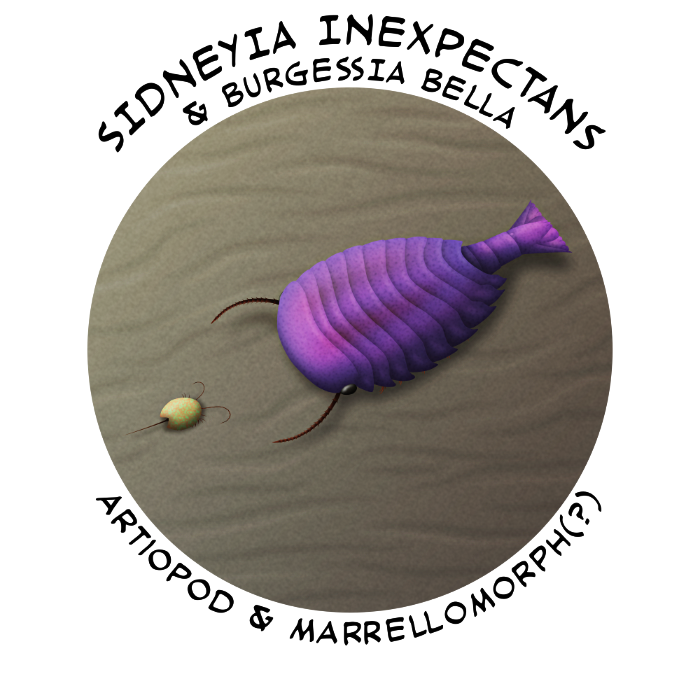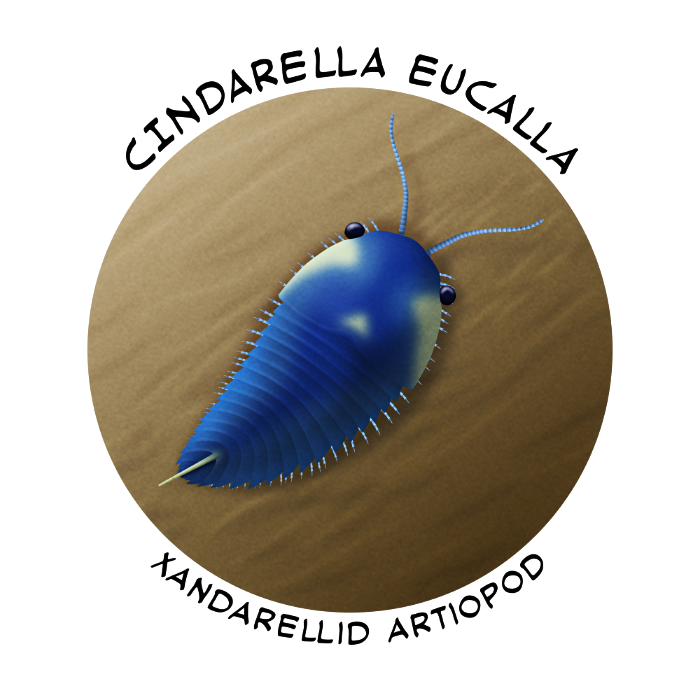The dominant group of Cambrian euarthropods were the artiopodans, a hugely diverse and long-lasting lineage that included the familiar trilobites along with all their close relatives.
They were some of the first euarthropods to appear in the fossil record, with fully formed trilobites seeming to “suddenly” appear about 521 million years ago and quickly spread worldwide. With the ancestral euarthropods estimated to have arisen between 550 and 540 million years ago, and the ancestral artiopodans not long after that, this means there must have been a lot of very rapid evolution and diversification in the space of just 20-30 million years.
Artiopodans were generally seafloor-crawling animals with flattened bodies and wide flaring segments in a trilobite-like shape. Different species could range from about 1mm (0.04″) to around 70cm long (2’4″) – with the largest Cambrian forms reaching as much as 55cm (1’10”), rivalling some of the bigger radiodonts in size.
Their exact position within the euarthropod family tree is still uncertain and varies from analysis to analysis, sometimes allied with the chelicerates in a group known as arachnomorphs, or sometimes instead placed as stem–mandibulates. Also sometimes the marrellomorphs are considered to be closely related to them.

Sidneyia inexpectans was an artiopodan from the Canadian Burgess Shale deposits (~508 million years ago). Up to about 12cm long (5″), it had a somewhat boxy shape with three clearly defined body regions – a head shield with small stalked eyes protruding from the sides, a segmented thorax, and a tail with a fluke-like tail fan.
It was probably a bottom-dwelling predator and scavenger, and preserved gut contents show it mainly fed on hard-shelled prey like small trilobites.
It seems to have had a fairly widespread distribution, with fossils also known from similarly-aged deposits in North China. Possible additional fossils have also been found in Greenland and the United States, and a potential second species Sidneyia sinica in the 10-million-year-older Chengjiang deposits in southwest China, but these aren’t widely accepted as being valid.
Living alongside Sidneyia in the Burgess Shale ecosystem was the enigmatic Burgessia bella. About 4cm long (1.6″), it resembled a tiny horseshoe crab with a rounded carapace, a pair of antennae, and a long tail spine. It had no eyes and was probably a seafloor scavenger, feeding on carrion and organic detritus.
Its evolutionary affinities are uncertain, but it’s often placed as a close relative of either the marrellomorphs or the artiopodans.
The xandarellids were a group of rare artiopodans characterized by unmineralized shells, large semicircular head shields, and “segment decoupling” – having each plate on their backs associated with multiple pairs of legs instead of just one, with the number of legs per plate increasing further towards the rear of their bodies.
They’re known mainly from the Chinese Chengjiang fossil deposits (~518 million years ago), but a single species in the younger Moroccan Tatelt Formation (~508 million years ago) indicates they had a wider and longer range than previously thought.

Cindarella eucalla from Chengjiang is one of the better-known members of this group, with both its exoskeleton and some of of its soft-part anatomy preserved in some specimens.
It was a fairly big euarthropod for the time at about 12cm long (5″), and had nearly 40 pairs of legs but only about 23 body plates, some of which were completely covered by its large head shield. Its stalked eyes stuck out from under the sides of its head and had around 2000 lenses each, suggesting it had excellent vision.
It was probably an actively mobile animal living on or near the seafloor, either hunting smaller animals or scavenging, with its keen eyesight allowing it to both locate food in low-light conditions and avoid larger predators like radiodonts.
